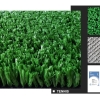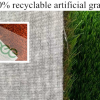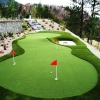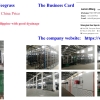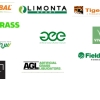How to Choose Different China Artificial Grass Factories
Choosing the right artificial grass factory in China matters: it affects product quality, delivery reliability, compliance with overseas regulations,
and ultimately your reputation with end customers.
Below is a practical, buyer-focused guide that covers the brand effect, how manufacturers are distributed across China,
and step-by-step selection criteria and tactics you can use to pick the best partner for your needs.
1. Stable quality systems.
Established brands usually have better R&D, stricter QC, documented production processes, and established raw-material supply chains (yarn, backing, infill).
2.After-sales support and warranty.
Big brands are more likely to offer reliable warranties, technical guidance, and replacement policies — important when selling to demanding markets.
3.Export experience & certifications.
Recognized brands often hold ISO, SGS, CE, or other product-compliance certificates, and understand documentation for customs and overseas standards.
So treat “brand” as one important signal, not the only decision criterion.
and ultimately your reputation with end customers.
Below is a practical, buyer-focused guide that covers the brand effect, how manufacturers are distributed across China,
and step-by-step selection criteria and tactics you can use to pick the best partner for your needs.
1.The brand effect
There are many large artificial turf brand suppliers in China, and they do have the following advantages:1. Stable quality systems.
Established brands usually have better R&D, stricter QC, documented production processes, and established raw-material supply chains (yarn, backing, infill).
2.After-sales support and warranty.
Big brands are more likely to offer reliable warranties, technical guidance, and replacement policies — important when selling to demanding markets.
3.Export experience & certifications.
Recognized brands often hold ISO, SGS, CE, or other product-compliance certificates, and understand documentation for customs and overseas standards.
but these companies also have some disadvantages:
1. high prices are common among large brands, as brand premiums, management costs, advertising investments,
and strict quality systems are all reflected in the final quote.
2. large brands typically have fixed production plans and processes, which are less flexible. 4
This results in slow response times for small batches or custom orders, and long lead times.
3.large brands often have high barriers to entry for cooperation, such as large minimum order quantities (MOQs),
making them unsuitable for small and medium-sized buyers or initial market testing.
4. brand companies have stricter contracts and after-sales processes, resulting in less room for negotiation and greater difficulty in making changes.
This can limit flexibility for clients who require flexibility, quick response, and cost control.
and strict quality systems are all reflected in the final quote.
2. large brands typically have fixed production plans and processes, which are less flexible. 4
This results in slow response times for small batches or custom orders, and long lead times.
3.large brands often have high barriers to entry for cooperation, such as large minimum order quantities (MOQs),
making them unsuitable for small and medium-sized buyers or initial market testing.
4. brand companies have stricter contracts and after-sales processes, resulting in less room for negotiation and greater difficulty in making changes.
This can limit flexibility for clients who require flexibility, quick response, and cost control.

